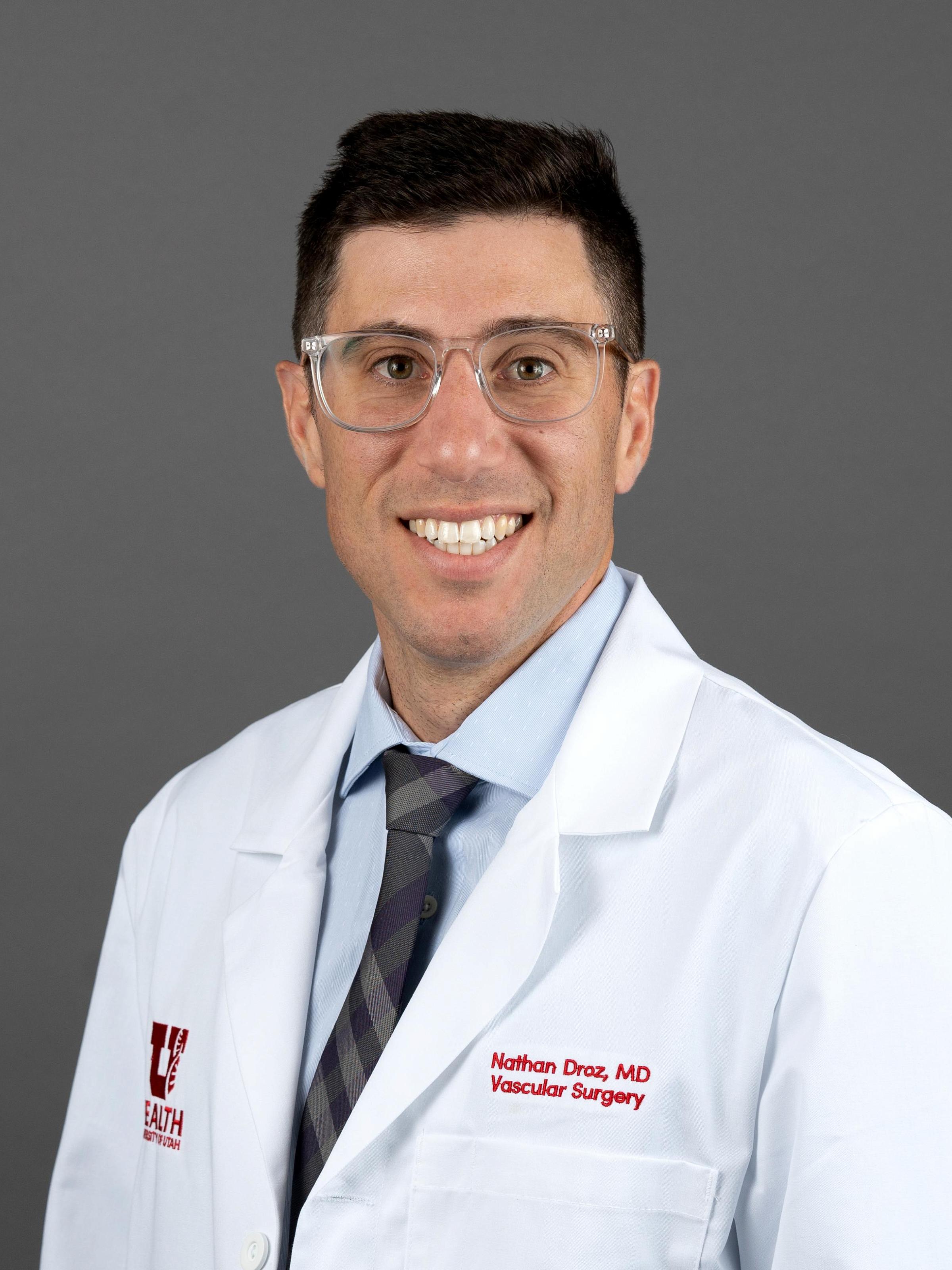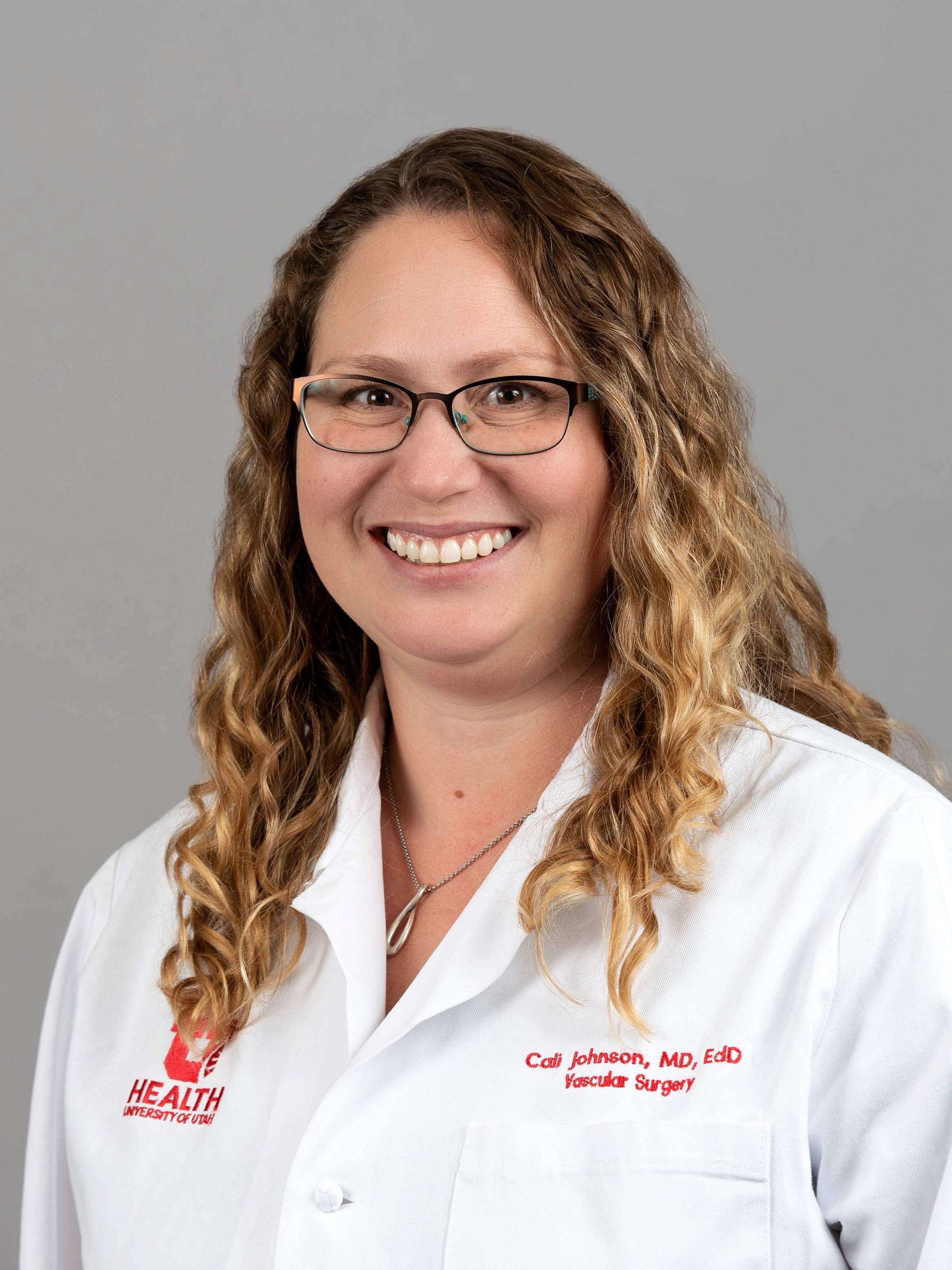
Innovative Approaches to Aortic Aneurysm Treatment

Each year, about 200,000 people in the U.S. are diagnosed with an abdominal aortic aneurysm—a bulging of the large blood vessel that runs through the abdomen. The condition, if left untreated, can rupture and be fatal. The multidisciplinary Aortic Disease Program at University of Utah Health is one of the only programs in the Western U.S. to offer the full spectrum of surgeries currently available to treat this potentially deadly condition and is the only health system in the region with the expertise to carry out a new, innovative personalized medicine approach for treating highly complex cases.
“We now have the capability to treat the entire aorta,” said Nathan Droz, MD, vascular surgeon at University of Utah Health. “Our goal is to make sure that we are giving each patient the correct operation for their anatomy.”
In the United States, the prevalence of aortic aneurysms is 4-8%. It is more common in men and those over the age of 65. The risk of developing an aortic aneurysm doubles with each additional decade of life. Contributing factors may include atherosclerosis (often linked to smoking), arterial inflammation, inherited connective tissue disorders like Marfan and Ehlers-Danlos syndromes, trauma to the aorta, or infections.
Since the middle of the 20th century, the primary treatment for an aortic aneurysm has been open aneurysm repair, in which a surgeon opens the belly, and sometimes the chest, controls the flow of blood, opens the aneurysm and sews a graft, or specialized tubing, in place to replace the artery. The hospital stay after this major surgery can exceed two weeks, while full recovery takes a couple of months.
“We now have the capability to treat the entire aorta,” said Nathan Droz, MD, vascular surgeon at University of Utah Health. “Our goal is to make sure that we are giving each patient the correct operation for their anatomy.”
In the United States, the prevalence of aortic aneurysms is 4-8%. It is more common in men and those over the age of 65. The risk of developing an aortic aneurysm doubles with each additional decade of life. Contributing factors may include atherosclerosis (often linked to smoking), arterial inflammation, inherited connective tissue disorders like Marfan and Ehlers-Danlos syndromes, trauma to the aorta, or infections.

Since the middle of the 20th century, the primary treatment for an aortic aneurysm has been open aneurysm repair, in which a surgeon opens the belly, and sometimes the chest, controls the flow of blood, opens the aneurysm and sews a graft, or specialized tubing, in place to replace the artery. The hospital stay after this major surgery can exceed two weeks, while full recovery takes a couple of months.
A far less invasive option, developed about 30 years ago and performed regularly for about 15 years, is complex fenestrated endovascular aneurysm repair (FEVAR), which can treat aortic aneurysms in the belly and aneurysms that extend into the chest. During this procedure, a surgeon inserts sheaths into femoral arteries, uses wires and catheters through access points and into the aorta and its branch vessels, and places an endograft device made of metal and synthetic material to seal off the aneurysm. The main aortic graft has fenestrations and branches that connect to the visceral and renal vessels to maintain vital perfusion to the abdominal organs. Recovery time varies but the hospital stay can be as short as a day or two.
Creating custom endografts
Beginning in July 2024, surgeons at U of U Health have had access to an off-the-shelf endograft developed by the manufacturing company W.L. Gore and Associates, called the Thoracoabdominal Branch Endoprosthesis (TAMBE). The program is just one of two in the Mountain West region with approval to use the device. Droz, who previously worked at a center heavily involved in clinical trials for the TAMBE before moving to the U in 2024, expects to use the device in about 20 procedures per year.
Not surprisingly, though, the one-size-fits-all approach does not work for all patients. About 10 centers across the U.S. work with medical device manufacturers to create custom endografts based on detailed CT scans of individual patients’ anatomy. The Federal Drug Administration (FDA) ensures the devices meet specific standards, while the manufacturers take on responsibility to monitor the performance of the device over time.
“The patients that can benefit from these manufacturer-built devices either live next to or can travel to one of these high-volume centers typically located in a major metropolitan area and has time to wait for the company to make the device,” said Cali Johnson, MD, EdD, vascular surgeon at U of U Health. “Patients who don’t have the resources to travel to a different site, or who find themselves in an emergency situation where they can't wait for months, need a different option.”

U of U Health recently received the green light from the FDA to offer that different option. The agency has authorized Johnson and Droz to conduct a physician-sponsored investigational device exemption [RB1] [CP2] (PS-IDE) research trial for the FEVAR procedure called a Physician-Modified Endovascular Graft (PMEG). Rather than sending a CT scan to a manufacturer and waiting for them to build a custom endograft, Johnson and Droz use patients’ CT scans as a guide to modify stock endografts themselves. They do this by burning circular holes into the endograft to accommodate branching stents that they slide in through the main endograft once it’s moved into place inside the patient.
“It's like building a ship in a bottle,” Johnson said. “We have all the different components, we align them with the patient’s anatomy, and then we put it together inside the patient.”
Johnson and Droz report outcomes to the FDA, then take on the responsibility of monitoring their handiwork over patients’ lifetimes.
“The FDA mandates a five-year minimum monitoring window, but we are committing to monitoring our patients’ aneurysms after their FEVAR procedure with regular CT scans and doing any necessary touch-ups for the rest of their lives,” Johnson said.
Johnson says FEVAR is ideal for particularly fragile patients who are either too old or too sick to undergo open aneurysm repair. “Prior to these minimally invasive FEVAR surgeries, these patients would have a big, old-fashioned open repair, but many would have complications that would send them to a nursing home or cause them to die in the hospital,” she said. “So, many of these patients were not offered anything. They were told, ‘You have an aneurysm, but we can’t fix it.’ Now, we have something to help them.”
Advancing aortic aneurysm care in the Mountain West
University of Utah Hospital is the only hospital with PS-IDE approval to perform FEVARs in the Mountain West region. Johnson and Droz have performed nearly 40 FEVARs so far, with plans to ramp up over the coming years. Because they service five different states, the Aortic Disease Program team routinely works with local providers as far as 200 miles away who perform CT scans and then the team conducts telehealth appointments with patients to discuss options based on their anatomy. In addition, because there is a strong genetic component to aortic aneurysms, the team often begins working with patients’ family members to monitor their aortic health as well.
Beyond the PS-IDE research trial, U of U Health is involved with other research trials, including the phase II/III stAAAble clinical trial in which a medication is delivered to the wall of small abdominal aortic aneurysms to stabilize the structure of the wall and slow its growth. They are also part of a long-term outcome trial for a thoracic stent graft called the Thoraflex Hybrid, which merges open and endovascular treatment of thoracic aneurysms.
“At U of U Health, we’re willing to offer options to patients when other places have said, ‘There's nothing that we can do,’” Johnson said. “The need to care for these patients is pushing surgery teams to be innovative. As a program, we are embracing this mindset. We work with patients and their families to create a treatment plan that works for them, aimed at balancing traditional open surgery with more innovative endovascular solutions, while maintaining quality outcomes that last.”